Functional Nano-Objects by Electrostatic Self-Assembly: Structure, Switching, and Photocatalysis
- PMID: 35359487
- PMCID: PMC8961288
- DOI: 10.3389/fchem.2021.779360
Functional Nano-Objects by Electrostatic Self-Assembly: Structure, Switching, and Photocatalysis
Abstract
The design of functional nano-objects by electrostatic self-assembly in solution signifies an emerging field with great potential. More specifically, the targeted combination of electrostatic interaction with other effects and interactions, such as the positioning of charges on stiff building blocks, the use of additional amphiphilic, π-π stacking building blocks, or polyelectrolytes with certain architectures, have recently promulgated electrostatic self-assembly to a principle for versatile defined structure formation. A large variety of architectures from spheres over rods and hollow spheres to networks in the size range of a few tenths to a few hundred nanometers can be formed. This review discusses the state-of-the-art of different approaches of nano-object formation by electrostatic self-assembly against the backdrop of corresponding solid materials and assemblies formed by other non-covalent interactions. In this regard, particularly promising is the facile formation of triggerable structures, i.e. size and shape switching through light, as well as the use of electrostatically assembled nano-objects for improved photocatalysis and the possible solar energy conversion in the future. Lately, this new field is eliciting an increasing amount of understanding; insights and limitations thereof are addressed in this article. Special emphasis is placed on the interconnection of molecular building block structures and the resulting nanoscale architecture via the key of thermodynamics.
Keywords: nanostructures; organic-inorganic hybrids; photocatalysis; self-assembly; stimuli-responsiveness; structure analysis; supramolecular chemistry; thermodynamics.
Copyright © 2022 Krieger, Zika and Gröhn.
Conflict of interest statement
The authors declare that the research was conducted in the absence of any commercial or financial relationships that could be construed as a potential conflict of interest.
Figures


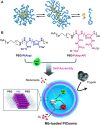
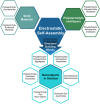


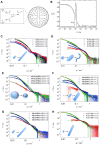



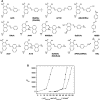



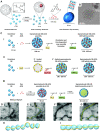








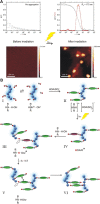






Similar articles
-
Controlling the Morphology in Electrostatic Self-Assembly via Light.Polymers (Basel). 2023 Dec 22;16(1):50. doi: 10.3390/polym16010050. Polymers (Basel). 2023. PMID: 38201714 Free PMC article.
-
Coordination-Driven Syntheses of Compact Supramolecular Metallacycles toward Extended Metallo-organic Stacked Supramolecular Assemblies.Acc Chem Res. 2017 Apr 18;50(4):885-894. doi: 10.1021/acs.accounts.6b00624. Epub 2017 Mar 6. Acc Chem Res. 2017. PMID: 28263559
-
Cucurbit[n]uril-Based Microcapsules Self-Assembled within Microfluidic Droplets: A Versatile Approach for Supramolecular Architectures and Materials.Acc Chem Res. 2017 Feb 21;50(2):208-217. doi: 10.1021/acs.accounts.6b00429. Epub 2017 Jan 11. Acc Chem Res. 2017. PMID: 28075551 Free PMC article.
-
Supramolecular assemblies of organo-functionalised hybrid polyoxometalates: from functional building blocks to hierarchical nanomaterials.Chem Soc Rev. 2022 Jan 4;51(1):293-328. doi: 10.1039/d1cs00832c. Chem Soc Rev. 2022. PMID: 34889926 Review.
-
Self-Assembled Graphene-Based Architectures and Their Applications.Adv Sci (Weinh). 2017 Nov 30;5(2):1700626. doi: 10.1002/advs.201700626. eCollection 2018 Feb. Adv Sci (Weinh). 2017. PMID: 29619311 Free PMC article. Review.
Cited by
-
Entropic Origin of Ionic Interactions in Polar Solvents.J Phys Chem B. 2023 May 18;127(19):4328-4337. doi: 10.1021/acs.jpcb.3c00588. Epub 2023 May 9. J Phys Chem B. 2023. PMID: 37159929 Free PMC article.
-
Preparation of RDX/F2311/Fe2O3/Al Composite Hollow Microspheres by Electrospray and Synergistic Energy Release during Combustion between Components.Materials (Basel). 2024 Apr 2;17(7):1623. doi: 10.3390/ma17071623. Materials (Basel). 2024. PMID: 38612136 Free PMC article.
-
Controlling the Morphology in Electrostatic Self-Assembly via Light.Polymers (Basel). 2023 Dec 22;16(1):50. doi: 10.3390/polym16010050. Polymers (Basel). 2023. PMID: 38201714 Free PMC article.
-
The Role of Light Irradiation and Dendrimer Generation in Directing Electrostatic Self-Assembly.Polymers (Basel). 2025 Jan 11;17(2):170. doi: 10.3390/polym17020170. Polymers (Basel). 2025. PMID: 39861244 Free PMC article.
References
Publication types
LinkOut - more resources
Full Text Sources
Research Materials
Miscellaneous

